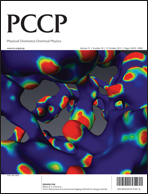In this work, we report our effort to understand the photocurrent generation that is contributed via electron–exciton interaction at the donor/acceptor interface in organic solar cells (OSCs). Donor/acceptor bi-layer heterojunction OSCs, of the indium tin oxide/copper phthalocyanine (CuPc)/fullerene (C60)/molybdenum oxide/Al type, were employed to study the mechanism of photocurrent generation due to the electron–exciton interaction, where CuPc and C60 are the donor and the acceptor, respectively. It is shown that the electron–exciton interaction and the exciton dissociation processes co-exist at the CuPc/C60 interface in OSCs. Compared to conventional donor/acceptor bi-layer OSCs, the cells with the above configuration enable holes to be extracted at the C60 side while electrons can be collected at the CuPc side, resulting in a photocurrent in the reverse direction. The photocurrent thus observed is contributed to primarily by the charge carriers that are generated by the electron–exciton interaction at the CuPc/C60 interface, while charges derived from the exciton dissociation process also exist at the same interface. The mechanism of photocurrent generation due to electron–exciton interaction in the OSCs is further investigated, and it is manifested by the transient photovoltage characteristics and the external quantum efficiency measurements.

You have access to this article
 Please wait while we load your content...
Something went wrong. Try again?
Please wait while we load your content...
Something went wrong. Try again?


 Please wait while we load your content...
Please wait while we load your content...